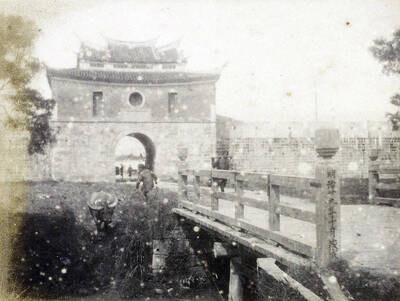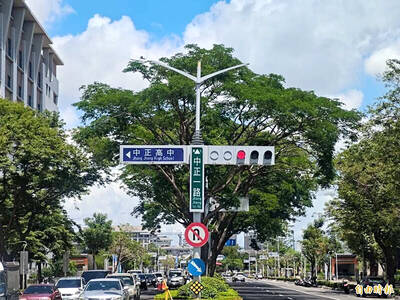1. The Five Tibetan Rejuvenation Rites
The origins of these rhythmic, yoga-style postures (each of which must be repeated 21 times) are shrouded in secrecy. Legend has it a British explorer "discovered" them while living in a monastery in the Himalayas. "The exercises work by balancing the body's chakras," says teacher Granville Cousins, whose youthful appearance belies his age (he's 55). The chakras -- invisible energy centers -- are believed to stimulate the glands of the endocrine system, which look after the body's functioning and ageing processes. Dedicated students rave about the flexibility, vitality and anxiety-quelling feelings that a daily 10-minute practice gives them. For more information, visit yogawithgranville.com, or read Christopher Kilham's The Five Tibetans (Healing Arts Press).
2. Ba Kua
Part of a complete health and martial arts system that includes taichi, this discipline, though little known in the West, can be learned by anyone and requires no prior skills beyond an ability to, er, walk in a circle. Not just any circle, though: "Ba Kua emphasizes sinuous, continual spiral movement -- it's a particular form of moving meditation that will calm the mind, increase core stability and gently extend your range of motion," says instructor Maurice Pressman. Go to pineapple.uk.com or roseli.org for more information.
3. AcroYoga
So you think you're a team player? Feeling brave? If so, this dynamic blend of acrobatics, yoga and Thai massage may suit you. "By using your partner's support and the freeing power of gravity, the body can be opened with grace and ease," says instructor Jason Neimer. As you'd imagine, dangling midair on the feet or hands of a stranger requires trust, and will develop your cooperative spirit. It is popular with sociable types and with those who "love to be upside down," says Neimer. Go to acroyoga.org for more information.
4. Yamuna Body Rolling
New Yorker Yamuna Zake invented this self-massage, workout, meditation and osteopathic/chiropractic session rolled into one. The rolling metaphor is apt: you use balls of varying density and size to isolate, stretch and release your body's muscles and tendons. There are routines to prevent headaches, back, neck and shoulder tension, and even jet lag. "Practise this two or three times a week and you'll improve your circulation, stand taller, move easier, age gracefully and feel great," says London therapist Kitsa Pateras, who offers one-to-one tuition, as well as group workshops. Log on to yamunabodyrolling.com for more information.
5. Beautcamp Pilates
Called Bootcamp in the US, and not without reason: this is Pilates plus circuit training on a scary-looking apparatus called the Reformer (imagine a psychiatrist's couch with added ropes, springs and pulleys). And why would you put yourself through this? "Mat-based Pilates can be boring on its own," says Sebastien Lagree, the LA- based Frenchman who pioneered the workout. "This way, you'll strengthen and stretch your muscles, and work on your core stability and balance in a rapid sequence that forces your heart rate to increase and enter the cardio target zone." Your psyche will benefit, too, says Lagree, who cites improved concentration and stress reduction as added perks. Ben Stiller and Nicole Kidman are rumored to be fans. Go to beautcamppilates.co.uk for more information.

June 9 to June 15 A photo of two men riding trendy high-wheel Penny-Farthing bicycles past a Qing Dynasty gate aptly captures the essence of Taipei in 1897 — a newly colonized city on the cusp of great change. The Japanese began making significant modifications to the cityscape in 1899, tearing down Qing-era structures, widening boulevards and installing Western-style infrastructure and buildings. The photographer, Minosuke Imamura, only spent a year in Taiwan as a cartographer for the governor-general’s office, but he left behind a treasure trove of 130 images showing life at the onset of Japanese rule, spanning July 1897 to

One of the most important gripes that Taiwanese have about the Democratic Progressive Party (DPP) is that it has failed to deliver concretely on higher wages, housing prices and other bread-and-butter issues. The parallel complaint is that the DPP cares only about glamor issues, such as removing markers of Chinese Nationalist Party (KMT) colonialism by renaming them, or what the KMT codes as “de-Sinification.” Once again, as a critical election looms, the DPP is presenting evidence for that charge. The KMT was quick to jump on the recent proposal of the Ministry of the Interior (MOI) to rename roads that symbolize

On the evening of June 1, Control Yuan Secretary-General Lee Chun-yi (李俊俋) apologized and resigned in disgrace. His crime was instructing his driver to use a Control Yuan vehicle to transport his dog to a pet grooming salon. The Control Yuan is the government branch that investigates, audits and impeaches government officials for, among other things, misuse of government funds, so his misuse of a government vehicle was highly inappropriate. If this story were told to anyone living in the golden era of swaggering gangsters, flashy nouveau riche businessmen, and corrupt “black gold” politics of the 1980s and 1990s, they would have laughed.

In an interview posted online by United Daily News (UDN) on May 26, current Chinese Nationalist Party (KMT) Chairman Eric Chu (朱立倫) was asked about Taichung Mayor Lu Shiow-yen (盧秀燕) replacing him as party chair. Though not yet officially running, by the customs of Taiwan politics, Lu has been signalling she is both running for party chair and to be the party’s 2028 presidential candidate. She told an international media outlet that she was considering a run. She also gave a speech in Keelung on national priorities and foreign affairs. For details, see the May 23 edition of this column,